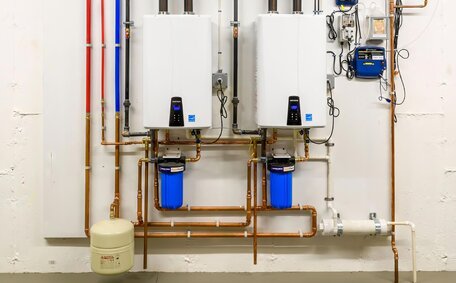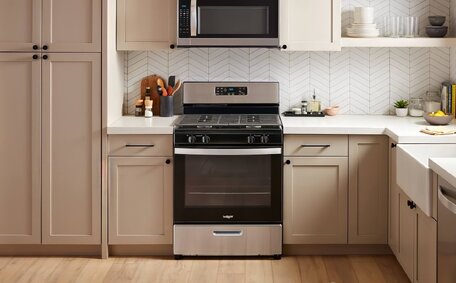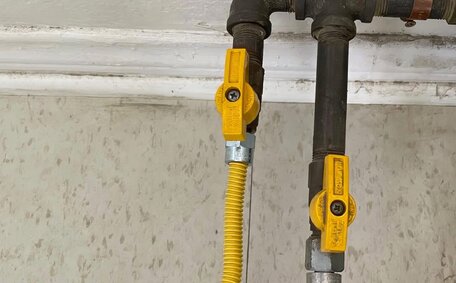
How Hard Water Hurts Hot Water Heaters
Hard water leaves mineral deposits in heaters, pipes and tanks. This limescale reduces efficiency, lifespan and hot water availability. Contact us for affordable water softening solutions.
Read MorePipe emergencies pose a significant risk, with an estimated 250,000 homes annually experiencing damage from frozen or burst pipes. As emergency plumbers serving Picnic Point, the United States, and the greater Sydney area, we at Picnic Point Plumbing understand the pros and cons of how susceptible different pipe materials are to issues like freezing, leaks, and corrosion.
Common plastic pipe emergencies include:
The type of piping employed in your plumbing system influences its susceptibility to these issues. We’ll compare different types of pipes like copper, PEX, and plastic so you understand the advantages and disadvantages of each when it comes to emergency resilience.
When selecting plastic pipe materials, consider their compatibility with your home’s plumbing needs. Here’s an overview of common pipe materials in home plumbing systems and their emergency resilience:
Properties: Durable, corrosion-resistant, withstands high water pressure. Generally lasts 50+ years.
Use Cases: Commonly used for water supply lines carrying hot and cold water. A favoured choice for connections in used plumbing systems, particularly hot cold water heaters.
In Emergencies: However, they can be vulnerable to pinhole leaks and are at risk of bursting when frozen. Pipes exposed to high temperature shifts must be properly insulated.
Properties: Flexible, made from cost-effective plastic, PEX piping resists scale buildup and corrosion with the added benefit of easy installation.
Use Cases: Increasingly used for hot and cold water delivery, as well as for used gas lines. Also suitable for radiant floor heating systems.
In Emergencies: PEX pipes risk bursting under prolonged freezing conditions and suffer UV damage with sunlight exposure.
Properties: Rigid and highly resistant to corrosion and abrasion. Comparatively low cost.
Use Cases: Typically used for wastewater drainage, vent piping, and various hot cold water applications.
In Emergencies: Susceptible to impact damage and fractures due to material characteristics, with varying resistance to freezing based on material grade.
If your home’s pipes are damaged, Picnic Point’s expert plumbers are ready to assist with repairs, replacements, and preventative maintenance. Call us or email to schedule service.
Metallic pipes, including common materials like copper, steel, iron, and lead, have been used in plumbing for their durability and high-pressure resistance. Yet, these materials may not perform as well as alternatives like PEX in emergency situations.
Copper pipe is corrosion-resistant, can withstand high water pressure, and has a long lifespan of 30-50 years. However, copper pipes are prone to pinhole leaks and bursting when exposed to prolonged freezing temperatures. Uninsulated copper pipes in exterior walls or attics can freeze and split open.
Steel pipes are typically galvanised or stainless for corrosion resistance. Stainless steel can also offer a longer lifespan but it comes at a higher cost. In emergencies, steel pipes resist high pressure but their significant expansion and contraction during thawing and freezing increase the risk of joint leaks.
Cast iron pipes are still used in some older homes. While very durable, they are vulnerable to internal corrosion and buildup of mineral deposits that restrict water flow. They become brittle over time and are prone to sudden cracking and bursting if exposed to rapid temperature changes.
For pipe repairs or replacements, call or email Picnic Point’s licenced plumbers. We can assess your pipes and help prevent future emergencies.
Plastic piping, including PEX and PVC, is gaining popularity for its corrosion resistance, flexibility, and DIY-friendliness. However, plastic pipes can have some disadvantages when it comes to emergencies:
Benefits: Flexible, resists scale buildup, doesn’t corrode, known for its easy install process.
Drawbacks: At risk of deterioration under uv light if the pipes are exposed to direct sunlight.
Benefits: Rigid and it’s also suitable for environments demanding high corrosion and abrasion resistance, all while being relatively low cost.
Drawbacks: Prone to impact damage and fractures. Not frost-proof or suitable for hot liquids.
Although convenient and affordable, materials like PEX and PVC have limitations, particularly in extreme temperatures. It’s crucial to know which pipes to use; for instance, PVC should not be used for hot water lines or drinking water transportation. For advice on selecting the right pipes, call Picnic Point’s professional plumbers.
Choosing durable materials like PEX for installation is key to mitigating pipe emergencies. Our licenced plumbers can provide services that adhere to Australian standards to select suitable materials and joinery methods for each application.
Properly routing pipes and insulating them can prevent freezing, though insulation alone isn’t foolproof.
Where possible, pipes should be installed in temperate areas like interior walls. Attics, crawl spaces, and exterior walls are areas where pipes are most vulnerable.
Secure fittings reduce leaks. Compression fittings offer a tight seal for copper pipes.
Glue, solvent welding or threads connect PVC joints. Allowing qualified plumbers can make these connections to prevent errors.
Proper pipe anchoring avoids stresses from movement and water hammer. Copper and plastic pipes should be firmly anchored. Proper pipe anchoring avoids stresses from movement and water hammer.
Long vertical runs of plumbing pipes require mid-point supports for stability.
For new pipe installations or to inspect your existing plumbing, contact our team. We can help identify vulnerabilities and recommend solutions to reduce emergency risks now and in the future.
Regular maintenance and proactive protection of pipes can prevent costly damage and avert emergencies. Here are maintenance tips tailored to different pipe materials:
Preventative measures such as insulation, leak prevention, and joint reinforcement can protect against pipe failures, regardless of the pipe type. Get in touch with Picnic Point Plumbing for tailored protection strategies and pipe inspection services.
In a pipe emergency, prompt action is essential to minimise potential water damage and further complications. Here’s how to recognize various pipe emergencies and respond effectively:
Signs of pipe emergencies include:
Emergencies such as rapid pipe corrosion, freezing, bursting, and drainage clogs demand immediate response.
To minimise water damage:
Minor pipe issues like leaks or drainage clogs can sometimes be fixed through DIY repairs. But extensive damage requires professional help. We have experience handling all types of pipe failures across residential and commercial sites.
Our team of licensed plumbers is available around the clock to respond to emergencies throughout Picnic Point and the greater Sydney area.
For reliable emergency plumbing repairs, call Picnic Point Plumbing at 1300 349 338. Or email to schedule an urgent appointment. Acting swiftly not only aids in reducing immediate restoration costs but also prevents extensive disruption in the long run.
Hard water leaves mineral deposits in heaters, pipes and tanks. This limescale reduces efficiency, lifespan and hot water availability. Contact us for affordable water softening solutions.
Read MoreIt’s important to routinely check your gas appliances for any issues. Signs of problems include gas leaks, strange sounds, odd smells and more. Have a professional inspect your gas appliances annually and service them regularly for safety.
Read MoreUpgrading your gas meter is a simple process completed by registered technicians. It involves disconnecting your gas supply for 15 minutes to swap the old meter for a new digital smart meter. The upgrade is free and improves accuracy.
Read MorePicnic Point, 2213 NSW
We will call back as soon as possible.




